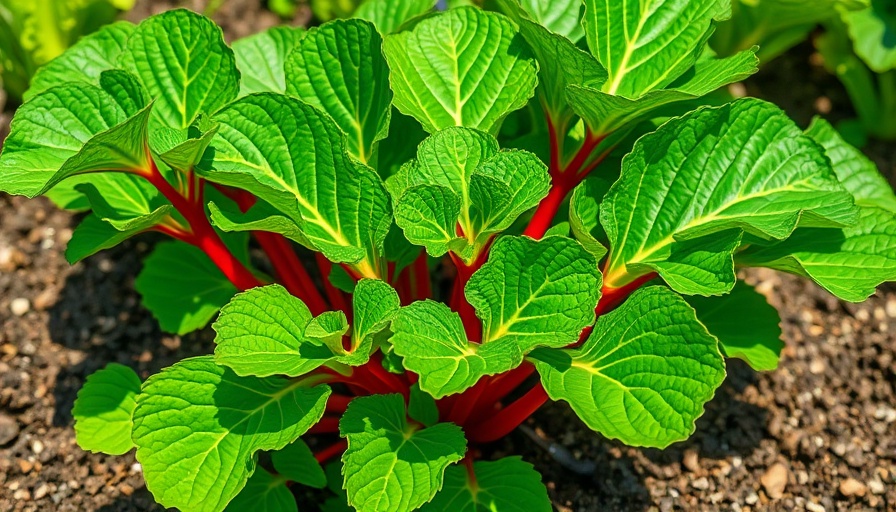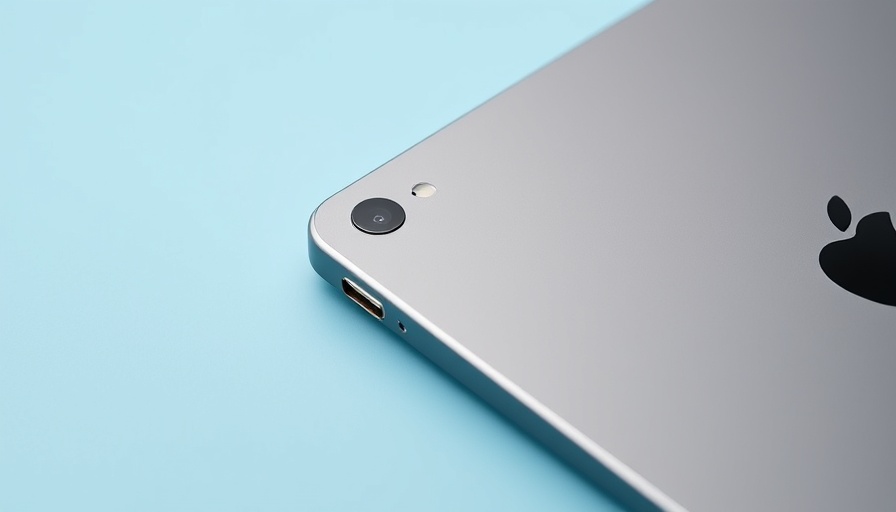
Unleashing the Potential of Your Rhubarb Garden
For many homeowners, incorporating rhubarb into their gardens is a delightful choice, offering both aesthetic appeal and culinary potential. This perennial vegetable not only flourishes in cooler climates but promises repeat harvests for over a decade when cared for properly. By following expert advice on when and how to harvest rhubarb, you can ensure a thriving plant healthily producing well into the future.
Key Timing for Harvesting Rhubarb
The secret to the best rhubarb yield begins with patience. New plants need time to establish themselves, so hold off on harvesting if your rhubarb is less than three years old. Laura Irish-Hanson from the University of Minnesota Extension emphasizes waiting until the plant reaches maturity to maximize yield. Typically, this means you're looking to pick rhubarb with leaves that are around 18 to 24 inches wide, signaling it's ready for harvesting.
Harvesting Technique: The Right Way To Do It
When it comes to actually harvesting rhubarb, ditch the scissors or pruners. Instead, use your hands for a gentler approach. By gripping the base of the stalk—known as the petiole—and twisting, you minimize damage to the plant. This method keeps the crown intact and healthy, safeguarding it against disease and ensuring future productions remain bountiful. As you pull away the stalks, remember to promptly chop off the poisonous leaves and dispose of them safely.
Best Practices for a Healthy Rhubarb Plant
It's essential to establish some rules for efficient rhubarb harvesting. Firstly, avoid harvesting during the summer months. Stalks tend to become tougher and less desirable once the heat sets in. Secondly, aim to take only a third to a half of the stalks at any given time. Allowing at least 50% of the plant to remain untouched helps foster ongoing growth and vitality.
Future Trends in Home Gardening
As sustainability grows in importance for homeowners, perennial vegetables like rhubarb are gaining renewed interest. Their durability and minimal care requirements fit seamlessly into the trend toward self-sustaining gardens. Homeowners are exploring sustainable choices that benefit not only their personal health but also the environment. Implementing best practices in rhubarb cultivation aligns perfectly with these values.
Rhubarb Beyond the Garden: A Culinary Delight
Once you've harvested your rhubarb, the fun has just begun. Its unique tart flavor opens the door to various recipes, from classic pies to innovative sauces. Home cooks are discovering the versatility of rhubarb in both sweet and savory dishes, showcasing its potential beyond traditional uses. This multifaceted vegetable not only enriches your garden but can also spice up your family meals.
Rhubarb represents an eco-friendly choice for those looking to enhance their home gardening journey while enjoying scrumptious homemade dishes. Explore the potential of your garden by embracing the art of rhubarb harvesting, and reap the benefits for years to come!
Take action today! Start maximizing your rhubarb harvest by incorporating these expert tips into your gardening routine. Experience the delicious rewards every season.
 Add Row
Add Row  Add
Add 




 Add Row
Add Row  Add
Add 

Write A Comment